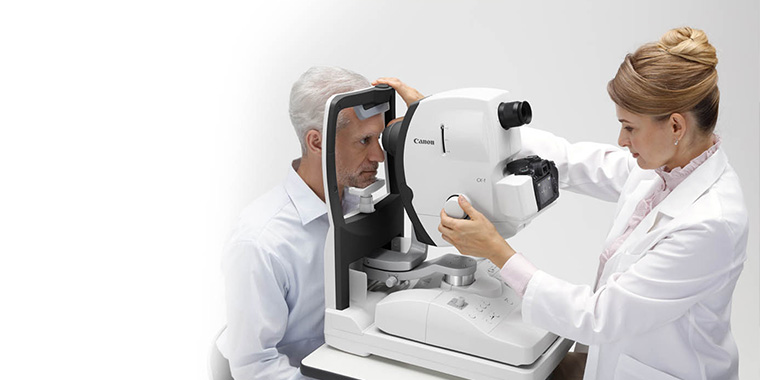Andalusia Eye Facility: Premier Services for Vision Adjustment
Andalusia Eye Facility: Premier Services for Vision Adjustment
Blog Article
The Advantages And Disadvantages of Different Refractive Surgeries for Boosted Eyecare

LASIK Surgical Treatment
LASIK surgical treatment is a typically performed refractive treatment that intends to remedy vision issues such as farsightedness, astigmatism, and nearsightedness. This medical strategy has actually acquired popularity as a result of its efficiency in supplying clients with more clear vision and minimizing their dependence on glasses or contact lenses. Throughout the procedure, a thin flap is developed on the cornea, and a laser is utilized to reshape the underlying tissue, fixing the refractive mistake. The flap is then repositioned, permitting fast healing and minimal pain for the individual.
One of the key benefits of LASIK surgical treatment is the rapid enhancement in vision experienced by lots of clients. It is important for people thinking about LASIK surgical procedure to undertake an extensive assessment by an eye care specialist to determine if they are suitable candidates for the procedure.
PRK Treatment
The PRK procedure, likewise recognized as Photorefractive Keratectomy, is a type of refractive surgical treatment that aims to deal with vision problems similar to LASIK surgery. Unlike LASIK, which involves producing a flap in the cornea, PRK functions on the surface area layer of the cornea.
One of the advantages of PRK over LASIK is that it gets rid of the threat of flap-related issues considering that no flap is produced during the surgical procedure. Regardless of the longer recuperation duration, PRK can be an appropriate choice for people looking for vision modification surgical procedure.
SMILE Surgical Treatment
An advanced refractive surgery method obtaining popularity in the area of ophthalmology is SMILE Surgical treatment. Small Cut Lenticule Removal (SMILE) is a minimally invasive procedure that corrects vision by reshaping the cornea utilizing a femtosecond laser. Unlike traditional LASIK surgical procedure, SMILE Surgery includes creating a tiny laceration in the cornea to extract a lenticule, which leads to less disruption to the corneal framework and possibly much faster recuperation times.
Among the key advantages of SMILE Surgical treatment is its ability to treat nearsightedness (nearsightedness) learn this here now and astigmatism with high accuracy, leading to excellent aesthetic results for patients. The minimally invasive nature of the treatment also decreases the risk of complications such as completely dry eye disorder, making it a desirable option for individuals seeking refractive surgical treatment.

LASEK Technique
Having explored the advantages and considerations of SMILE Surgery, an additional noteworthy refractive surgical treatment method worth checking out is the LASEK Method. LASEK, which stands for Laser-Assisted Subepithelial Keratectomy, is a form of laser eye surgery that aims to correct refractive errors such as myopia (nearsightedness), hyperopia (farsightedness), and astigmatism.
Unlike LASIK, LASEK does not include producing a corneal flap. Rather, during a LASEK procedure, the specialist utilizes a diluted alcohol remedy to loosen up the slim external layer of the cornea, known as the epithelium.
One of the key benefits of LASEK is that it can be suitable for individuals with next thin corneas who may not be excellent prospects for LASIK. In addition, LASEK normally leads to marginal post-operative discomfort and a quicker recuperation time contrasted to PRK. The visual recuperation process with LASEK might be somewhat longer than with LASIK.
Implantable Contact Lenses
Implantable Call Lenses offer a lasting vision modification service for people seeking a choice to traditional get in touch with lenses or glasses. These lenses, also referred to as phakic intraocular lenses, are surgically placed into the eye to correct refractive mistakes such as nearsightedness (nearsightedness), hyperopia (farsightedness), and astigmatism. andalusia pediatrics. Unlike conventional get in touch with lenses that sit on the surface area of the eye, implantable contact lenses work within the eye itself, giving clear vision without the requirement for daily upkeep or removal
Among the essential benefits of implantable call lenses is their durability. As soon as inserted, they can remain in the eye indefinitely, offering consistent and stable vision improvement. In addition, these lenses can be an exceptional option for individuals who are not great prospects for laser eye surgery or who like a reversible vision correction treatment.
Nevertheless, implantable call lenses do carry some dangers, consisting of the potential for cataracts or enhanced eye pressure. It is crucial for people considering this alternative to seek advice from with an eye care specialist to i thought about this establish if implantable call lenses are the right selection for their certain needs and eye wellness.
Final Thought
Finally, each type of refractive surgical treatment has its own benefits and drawbacks. LASIK surgical procedure is preferred for its fast recuperation time, while PRK treatment may appropriate for clients with slim corneas. SMILE surgical procedure uses very little discomfort throughout the procedure, yet LASEK technique may have a longer recovery process. Implantable get in touch with lenses provide a choice for those that are not ideal candidates for traditional surgical procedures. People need to speak with their eye treatment service provider to establish the most effective option for their specific requirements.

On The Whole, SMILE Surgery presents a promising choice for individuals looking to improve their vision through refractive surgery.
Report this page